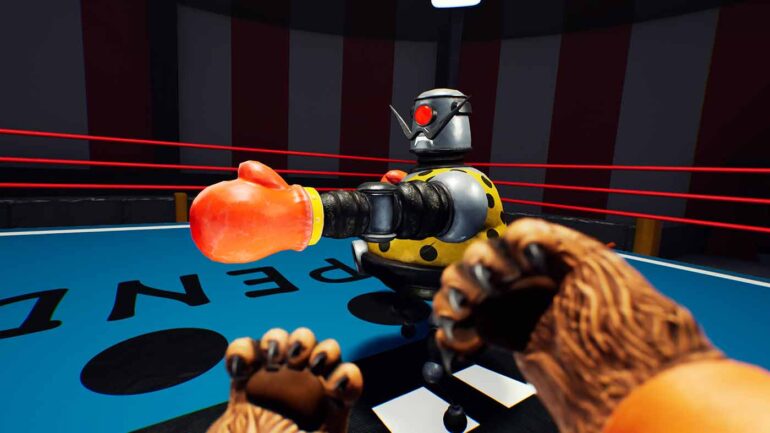Bears in Space, the incredibly-impressive debut effort from the three-person team at Brisbane’s Broadside Games, is finally beginning its launch rollout over day or two after being worked on in various capacities for seven long years.
No doubt in a combination of excitement, relief, anxiety and exhaustion, John Eyre, Garth Edwards and Daniel Goodwin are about to kick back and enjoy the fruits of their hard work as players around the world get to experience the kind of absurdity, fun and absurd fun of a game titled “Bears in Space.”
With that in mind, we had the chance at a quick chat with team Broadside, to ask them about the game’s inception, creation and release along with what it’s been like working as a super-tight studio in the Aussie development scene. Check it out:
Firstly, how long has this project been in development? How did it all kick off?
Broadside Games: We’ve been in production for around 7 years now, it started off as us messing around in Unreal Engine and learning how to make a game on the weekends and before work etc.
The start is sort of lost to time being so long ago, I can’t really pinpoint where we decided to make a game, we had prototyped other smaller game ideas and other concepts before buckling down with an FPS.
How would you describe Bears in Space to someone with zero knowledge of the game?
BG: Bears In Space is a cartoony and absurd FPS Bullethell adventure. You play as Maxwell Atoms after he’s had his DNA merged with that of the She-Bear Beartana due to an accident aboard your spaceship. Now stranded deep inside unknown space, you must blast your way through hordes of enemies and find your way back to Earth.
And why bears? Why space?
BG: Pigs had already been done.
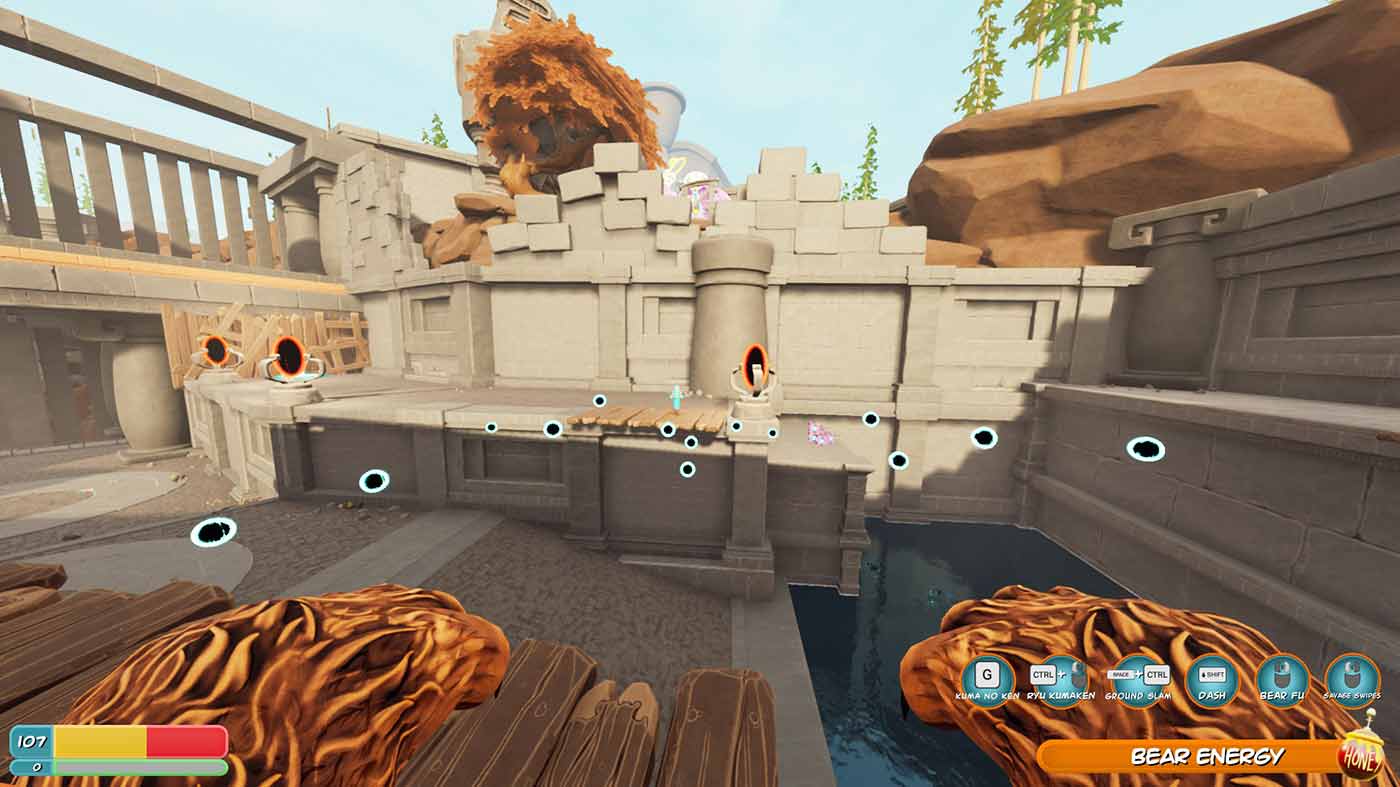
How different is the game now from its earliest ideas or iterations, if at all?
BG: It’s come a long way from the very early days when we were still trying to figure out how to make a game. The core pillars have remained the same, a fun first, absurd and cartoony FPS, but everything has been reworked and polished many times over.
Was a single-player experience always the goal?
BG: Yep. We always wanted to give the player a full single player adventure like the old PS2/Xbox era of games.
What would you say are some of the unique advantages to producing a game with such a small team?
BG: So we are just a core team of three. Roughly 99% of what you see in the game was done by just the three of us.
The strengths would really be in the trust and vision alignment we all have. We’ve been mates for over 10ish years, so we get each other’s humour and style. We are able to make decisions independently on our own and have it conform to the overall vision. We are also brutally honest
with each other, so if something isn’t as fun as we had hoped it would be, we are quick to bring it up and work through it.
We also all have a strong work ethic and each of us having had awful day jobs in the past, we can appreciate how much fun it is to make games and are all working as hard as possible to deliver the best product we can.
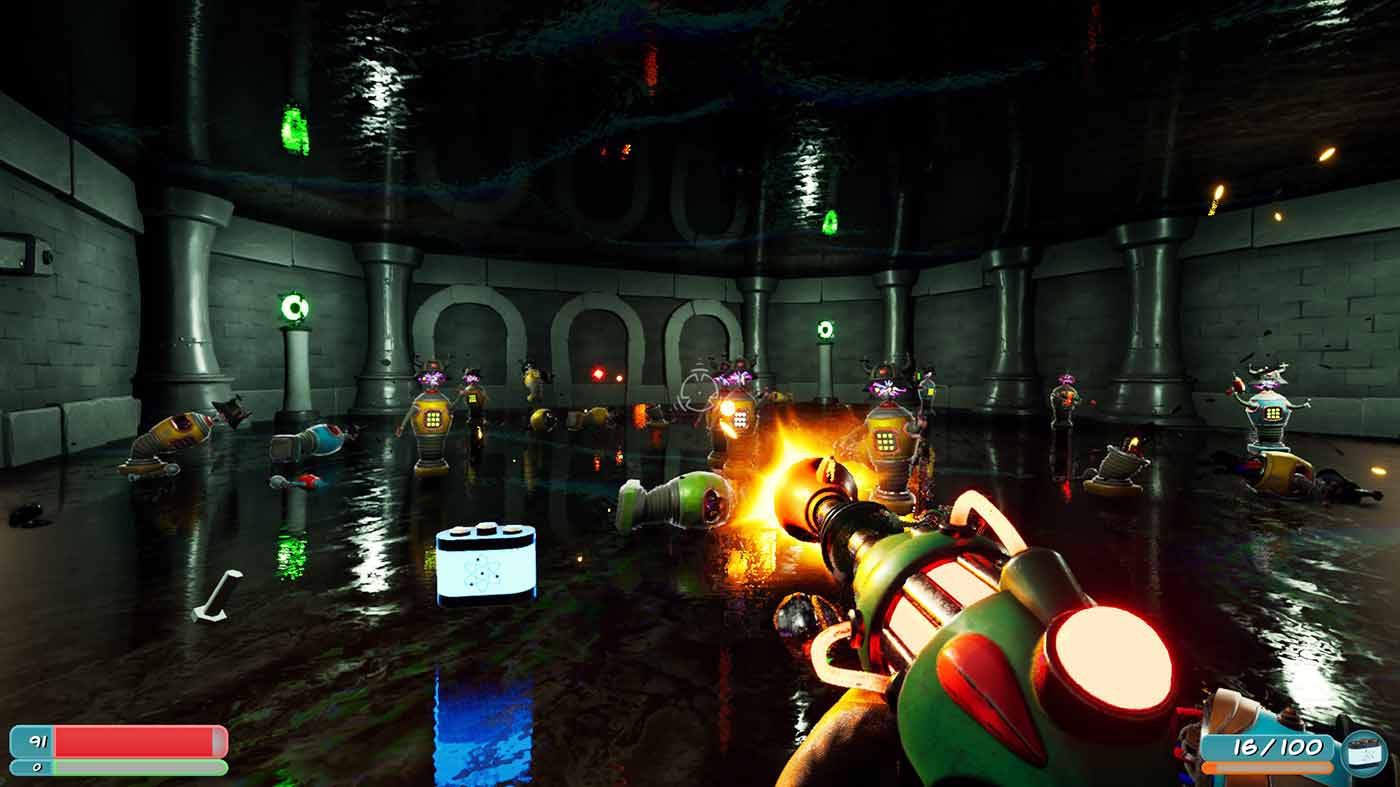
And likewise what are the challenges? What advice would you give other small teams aiming for a game of this scope? Or even to your past selves?
BG: The biggest challenge is time. There is only so much you can do, that’s when you need to reach out and bring on help for things you can’t do. Realising and admitting your weaknesses can be tough but it’s needed.
Scope was a tricky one for us since it was such a long project. Building the game on the weekends before funding, the scale was much smaller.
My advice would be to work backwards when planning out the game you want to make. Give yourself a set amount of time and then break that down into milestones with a Gantt chart (it’s boring but trust me, you need to do this.) Figure out how long things will take to make and see what is achievable in the set time. Giving yourself a 20 to 30% buffer for things to go wrong.
With that all in place you should have an idea on the scope of your project and what you can achieve.
Another point of advice is to find the fun first before anything else. Keep the art simple and greyboxed for as long as you can. Don’t get bogged down and distracted by art. If you can make the game fun with just the simplest shapes then the art and sound etc is only going to multiply the enjoyment moving forward.
Finally find a good and honest group of people that will give you real and brutal feedback. Don’t set for “It was great” style of feedback.
What has the support from a publisher meant for the game and its development?
BG: It gave us money and time. It allowed us all to work full time on the game and to bring on outside help where we needed it. The publisher has also taken time-consuming jobs off our hands like QA, Localisation, Marketing etc. Things that are out of our wheelhouse.
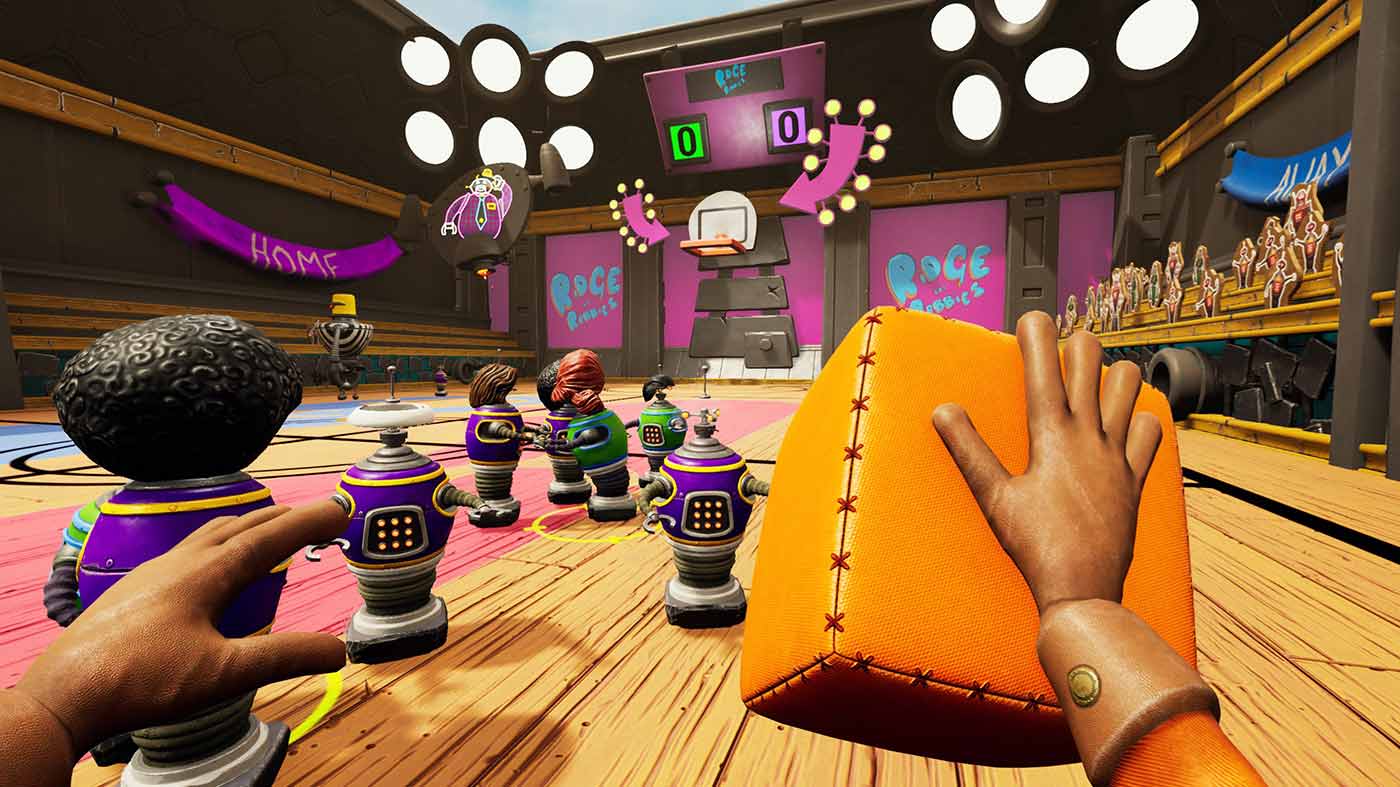
How is working as a small developer in Australia? Would you say the level of support offered to creators here is encouraging?
BG: It’s a tough one to answer, with the game taking so long to make, we can say that things are much better now. At the beginning of development, we hit some brick walls but there’s been a major shift in recent years to the positive.
The kind of silly, comedic tone of this game feels like a relic of the Timesplitters era at times. Would you say there are any unique challenges or processes in making a game “funny” versus other mediums?
BG: It’s just in our DNA to make fun goofy games. I can’t really imagine us making something serious. There is a risk that people will bounce off the style of humour but you can only ever write jokes for yourself. The minute you try and write a joke for someone else it’s game over.
The gunplay and adventure elements are the meat of the game, the humour never gets in the way of the fun and gameplay loops. We also make sure to never linger on a joke. We hit you with a joke or reference and we quickly move on. You either got it or we’ve moved on to the next absurd moment or action, so you don’t even know you’ve missed out. We never pause for applause.
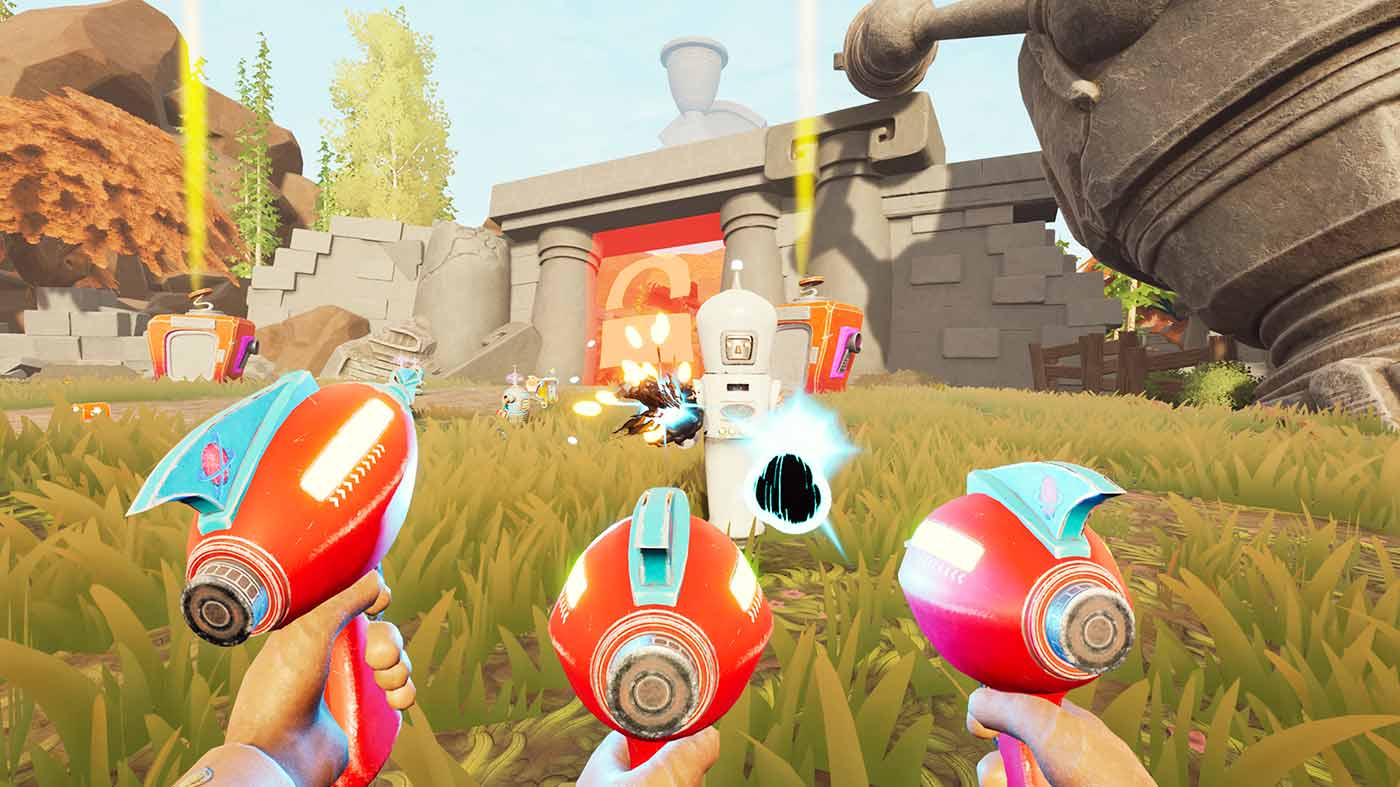
We’ve spotted some pretty neat references in what we’ve played of the game so far, including what appear to be nods to The Trap Door and Garth Marenghi’s Darkplace. Do those speak to the kind of audience you’re hoping will vibe with this game?
BG: We pay tribute to a lot of stuff we grew up with or are general fans of. There are references and goofy gags and throwbacks littered throughout the whole game. None requires knowledge of the source to enjoy and we don’t linger on any joke, so if you miss something, it won’t impact your enjoyment.
And more broadly speaking, what were some of your biggest influences for Bears in Space in terms of other games or bits of media?
BG: We draw on a really wide and varied list of influences. The biggest and probably most obvious are games like Doom, Ratchet and Clank, Serious Sam, Timesplitters etc.
We lean into a lot of what we enjoyed playing over the years from retro to modern games. We also watch a lot of movies and that would always spark some goofy idea that we had to jam into the game.
Some of the more obscure references might be:
- Monkey Island, our salesman wears a very similar outfit to Stan, we even have a Dial A Bot item that you use to progress later in the game.
- Crash Bandicoot 4, when that game came out, the art blew my mind and was one of the bigger driving forces in moving away from a more muted tone.
- Brutal Doom, the way the weapons feel and movement
- Jazzpunk, this game opened our eyes to how stupid we can get in a game when it first came out many years ago.
- Army Men, there’s a pretty important change up in genre gameplay that takes place in the later levels of the game that was inspired by it.
But really the list is massive, we take bits of everything we found funny, stupid, or awesome over the last 7 years.
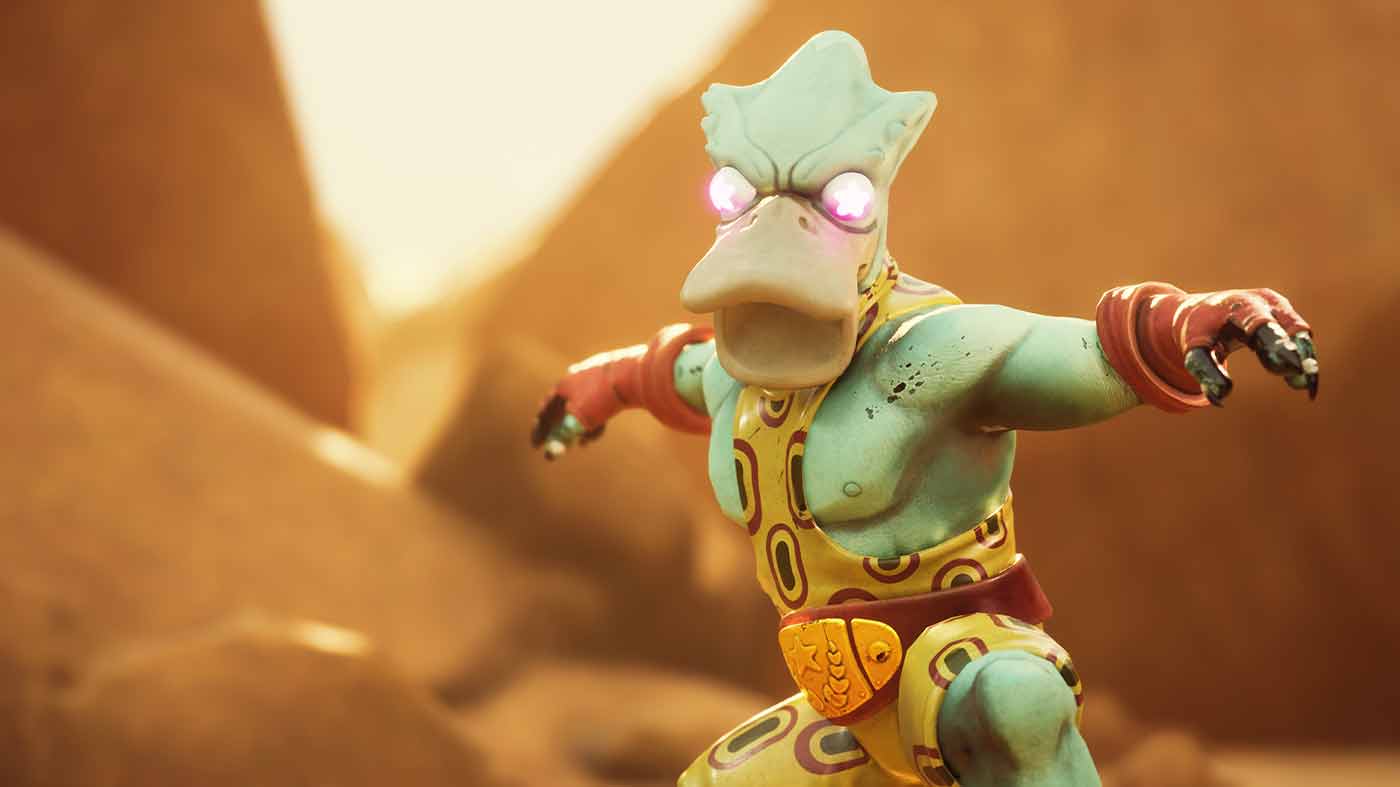
How has showing off the game at events like PAX helped shape the game?
BG: PAX was great, it was the first time we had been. It let us catch a few little things we hadn’t thought about, like how we highlight certain signposts. But overall, it was huge confidence/morale boost seeing people lining up to play Bears In Space and really enjoying it. Making a game for so long, you can start to doubt the vision and the game. So it was great to see so many people enjoy it especially as we approached the final stretch!
What was the team’s approach to accessibility and approachability in this game? Has working with a smaller studio led to many challenges or learnings in that regard?
BG: We’ve tried to do what we can but we are limited by our team size. We do hope to be able to add more post launch, but what we do currently have is:
The projectiles have high contrast that should be easily seen in any environment.
The colours of the robots sit at a higher luminance and saturation value over all the environments, so we are hoping that also helps.
We also have the ability to set things like our Platform Helper mode. This makes the platforming (double jump, dashing etc) easier to complete as we place platforms, bridges, jump pads across all the difficult areas. This setting is also great for kids who might love blasting bots but struggle a little with those elements.
We also have sliders for difficulty, you can change incoming and outgoing damage values. You can make it as hard or as easy as you like.
Finally, there is a Respawn mode that allows for you to instead of dying, just respawn in the arena and continue fighting without reloading and starting fights again.
Ultimately, we thought it really important to allow the player to play the game how they want.
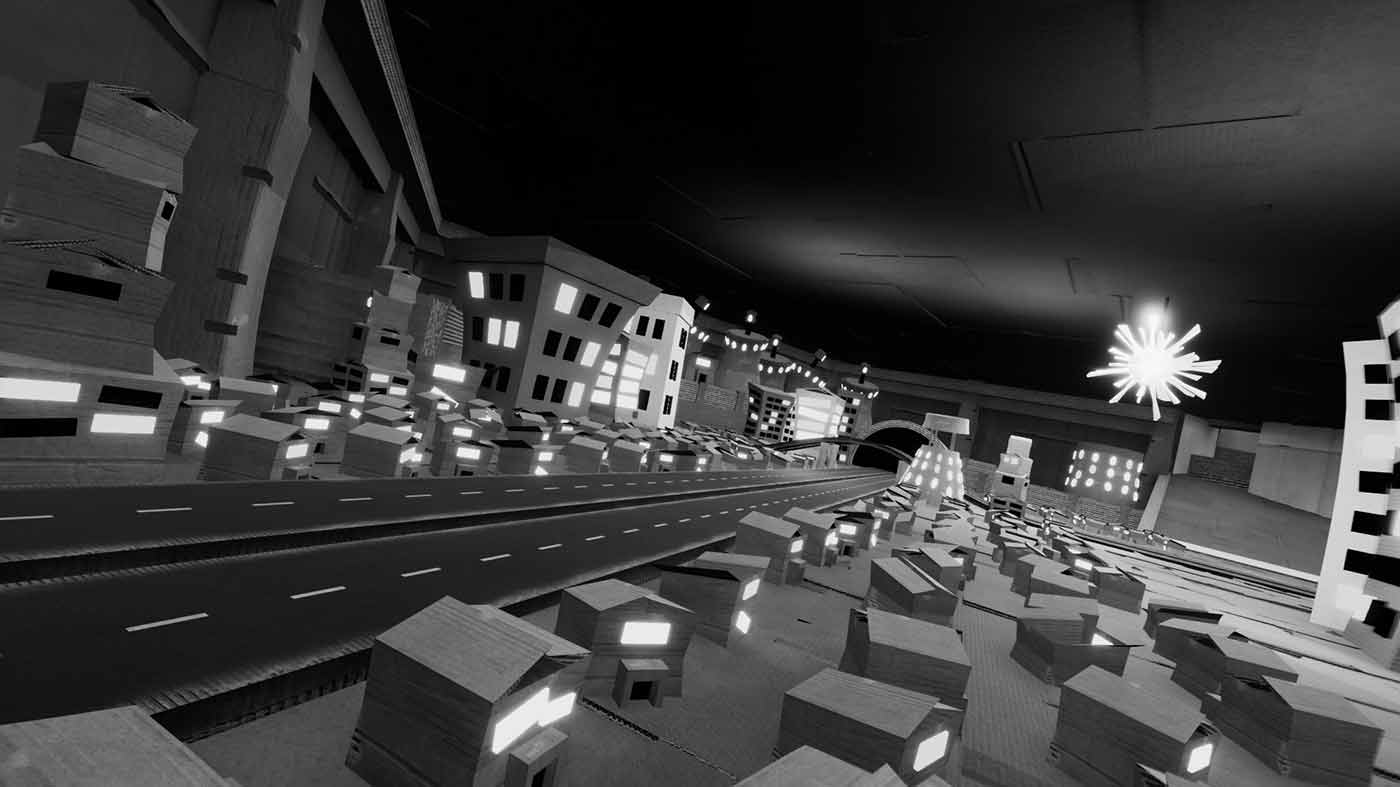
What’s the future look like for Bears in Space and for the team once it launches? Can we expect to see the game reach more platforms or receive more content?
BG: First step will be having a bit of time off. The three of us are exhausted haha.
After that we would love to port it to consoles but it will entirely depend on how well the PC launch goes. So tell all your friends about Bears In Space!
Thanks for your time and all the best with launch!
Thanks!
Bears in Space launches on March 22nd/23rd and you can find it on Steam right here.


